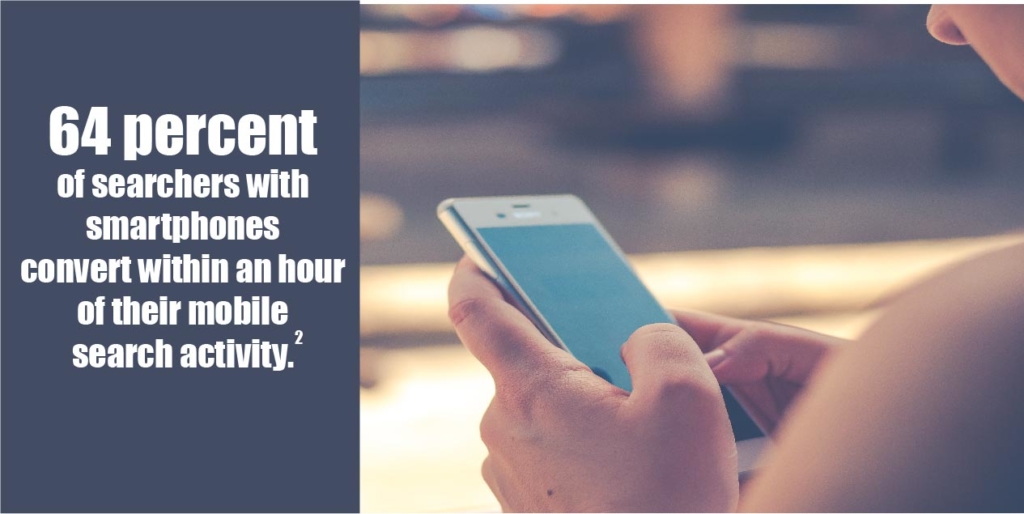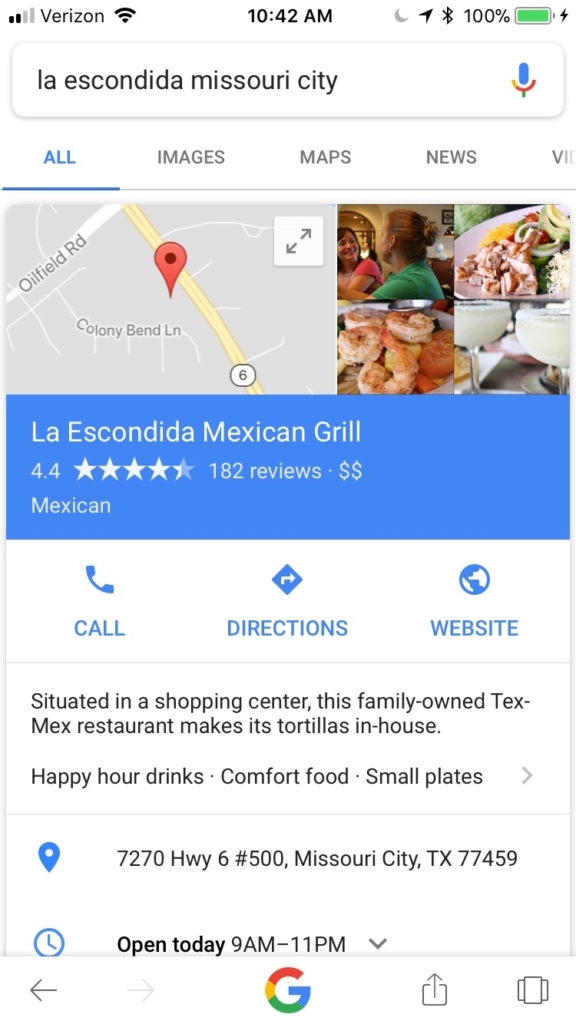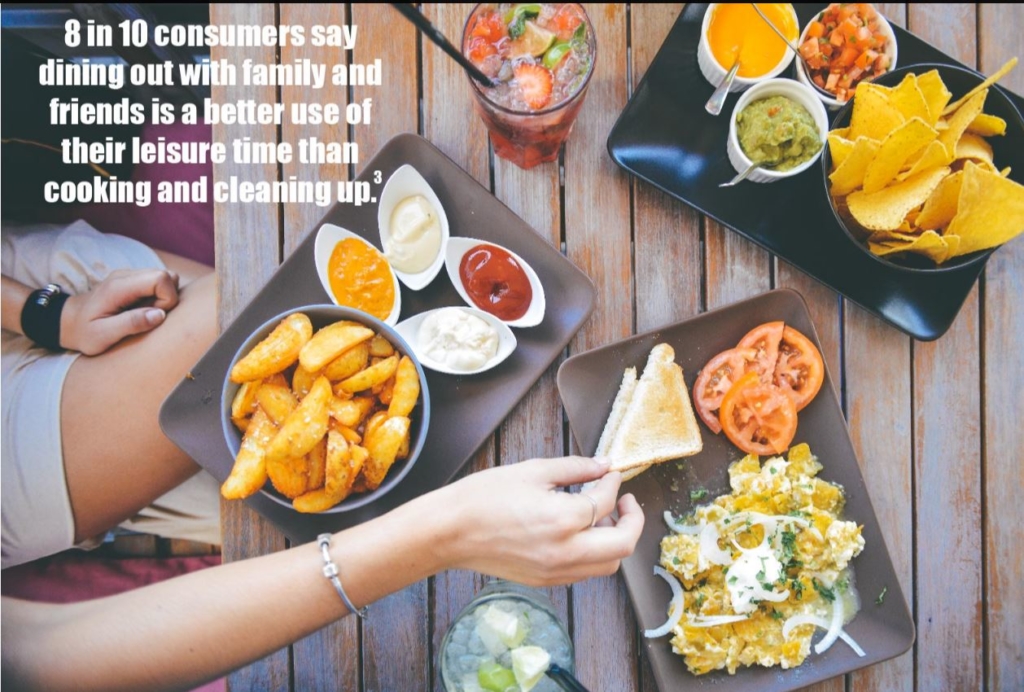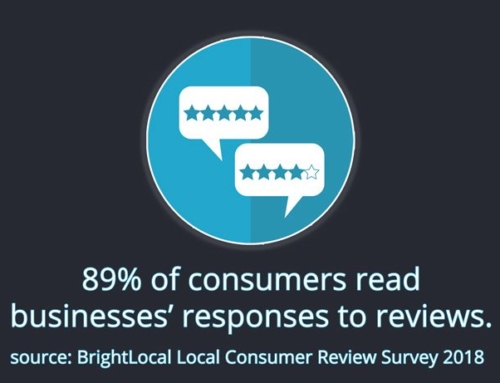
The love of cooking, a long history working in restaurants, free food and great people… These are a few of the reasons people cite for working in the restaurant industry. Some translate that passion into opening a new restaurant and owning it. Still, the restaurant business is not for the faint of heart and garnering a crowd of hungry customers is serious business. Here are 10 marketing tips for opening a new restaurant with patrons ready to eat and pay.
- First, define your ideal customer. It isn’t everyone in town. Get specific regarding their likes and dislikes, age, work status, family make-up (married with kids versus single, etc.), preferences on how they enjoy spending free time, annual salary and likely disposable income. That’s a lot of information to sift through but it will guide your marketing decisions to best engage with your target market. If you’re unsure of this information, study your competitors and consider how your restaurant is similar and different. Ask people whom you know live nearby and who you suspect are likely to visit your eatery. Then, use the collected information to paint a picture of your soon-to-be favorite customer.
- Buy a mail list of possible patrons who live within 10 minutes of your venue. (According to a report by Access Development1 in the summer of 2016, consumers in urban areas tend to travel up to 11.45 minutes for casual dining.) Mail the neighbors on this list an over-sized postcard announcing your grand opening date. Include the reasons they should try your food over other neighborhood establishments they may have already tried. On the postcard, include:
- The restaurant address and a map
- Phone number
- Days and hours of operation
- Photos of your food
- Website address
If your budget allows for the cost, plan one postcard mailing with the intended delivery happening one week prior to opening day and a second mailing to be received about one day prior to opening. Timing can be tricky so remember that it’s better for prospects to receive the postcard a few days early than one day late.
- Launch your website or update your current site with details of your new restaurant. This sounds like a no brainer but in the rush to secure your permits, ensure electricity is running, train staff and stock the kitchen, your website might not be on your mind. It should be since most folks are likely to find you on the web and the fast-paced Internet can drive foot traffic into your restaurant.

Not only should your website be up-to-date, it must:
- be mobile-friendly,
- clearly show the restaurant phone number (a click-to-call link is even better!),
- list the address with directions and note nearby businesses,
- feature your menu and
- link to reviews on social media. (This last one is a little challenge for new establishments, but we’ll cover that later in this post in tip #7.)
- Speaking of social media, let’s talk Google. As soon as your restaurant has its phone number activated and
 someone is available to answer calls, set up a Google My Business listing (a combination of the former Google Places and Google+) page. Someone will need to answer an automated call from Google to secure a validation code to complete the Google My Business set up. Alternatively, Google can mail a postcard to your location with a verification code but that typically takes two weeks and, because the venue is new, mail may not meet its destination in a timely manner. The great thing is that Google My Business really helps customers find your location so setting this up in advance is important. In the Google My Business account, include your phone number, address, directions, hours, website and photos. In terms of results, you want your restaurant to be featured first when searching on a mobile phone for your company name. Ideally, your restaurant will also come up on the first page of search results when you search for your restaurant category (Italian, fine dining, café) in your area of town.
someone is available to answer calls, set up a Google My Business listing (a combination of the former Google Places and Google+) page. Someone will need to answer an automated call from Google to secure a validation code to complete the Google My Business set up. Alternatively, Google can mail a postcard to your location with a verification code but that typically takes two weeks and, because the venue is new, mail may not meet its destination in a timely manner. The great thing is that Google My Business really helps customers find your location so setting this up in advance is important. In the Google My Business account, include your phone number, address, directions, hours, website and photos. In terms of results, you want your restaurant to be featured first when searching on a mobile phone for your company name. Ideally, your restaurant will also come up on the first page of search results when you search for your restaurant category (Italian, fine dining, café) in your area of town.
NOTE from experience: Do not list a phone number other than the one you want patrons calling in the future. While the phone number can be changed, the update often takes an inconvenient amount of time and the phone number listed initially can get annexed elsewhere, leading to lost customers who become frustrated when they can’t connect to the actual restaurant. Wait until the official restaurant phone number is activated and being answered by a team member.
- Social media is less expensive than traditional print advertising and allows you to do geo-targeting with your ads. Use the Facebook pixel to your advantage. Installing the pixel on each page of your website allows you to target your site visitors when they later visit Facebook by serving up one of your advertisements tied to the content visitors viewed on your website. Over time, this helps you better market to people who are already interested in visiting your restaurant.
- Establish your presence on Yelp. While it is one more channel to manage, you’re better positioned when you own the restaurant’s account on Yelp, rather than having a disgruntled patron or a competitor set up your restaurant there. This latter scenario would result in an “unverified” listing that you as the business owner can later claim. However, by preparing your Yelp account from the onset, you are notified when reviews about your restaurant are posted and you can respond accordingly. Own your presence.
- Identify the managing editor or restaurant beat reporter at your community publications. Write a press release with the grand opening details. If you will have a VIP soft opening, include that information in the press announcement, noting the VIP event is specifically for reporters and select VIPs so that the media knows not to publicly share that information with the public. Positioned correctly, the VIP event allows you to nurture relationships with local leaders while paying special attention to the members of the media in hopes that they’ll cover your restaurant positively in an upcoming article as well as on an ongoing basis. This is about building relationships with journalists.
Another benefit of having a VIP event is that it gives you a more intimate crowd to speak with and a focused time to deliver an exceptional experience. Encourage your VIPs to write reviews about their visit on social media, naming the social channels where you are most active. (Yelp and Facebook are great for this type of restaurant review.)
 There are benefits to having a VIP event a few days before your opening and advantages to having it on the same day as the official opening. Scheduling the VIP event immediately before the official grand opening is beneficial because as patrons arrive, they see the VIPs inside enjoying themselves. This helps build excitement for the actual opening, but it adds to the list of things that must be done on opening day, which tends to be stressful in and of itself. On the flip side, hosting a VIP reception at your restaurant days before the grand opening allows guests to post to social media and add reviews about the experience, presents the opportunity to take photos of happy VIPs and then send the photos to local reporters, and gives you new content to add to your website (other than photos of the empty restaurant that you may already have.) This earlier scenario does require your restaurant to be flawlessly ready for prime time sooner though. Weigh the benefits with the drawbacks to determine what works best for your restaurant.
There are benefits to having a VIP event a few days before your opening and advantages to having it on the same day as the official opening. Scheduling the VIP event immediately before the official grand opening is beneficial because as patrons arrive, they see the VIPs inside enjoying themselves. This helps build excitement for the actual opening, but it adds to the list of things that must be done on opening day, which tends to be stressful in and of itself. On the flip side, hosting a VIP reception at your restaurant days before the grand opening allows guests to post to social media and add reviews about the experience, presents the opportunity to take photos of happy VIPs and then send the photos to local reporters, and gives you new content to add to your website (other than photos of the empty restaurant that you may already have.) This earlier scenario does require your restaurant to be flawlessly ready for prime time sooner though. Weigh the benefits with the drawbacks to determine what works best for your restaurant.
- Run an advertisement in your community publication to grab readers’ attention and encourage them to arrive early on opening day. In addition to the basic contact details that were recommended earlier to include on your website and social media, list prizes that will incentivize a crowd. This could range from a goodie bag of treats from your restaurant for the first 20 people who arrive to all visitors on opening day being entered in a drawing for a gift certificate for a return trip. The goal is to attract a line at the door prior to opening, keep steady traffic throughout regular meal times and give guests promotional items that keep your restaurant in front of patrons.
Keep in mind that monthly publications have longer lead times, so you may not have all your details confirmed in time to submit an advertisement to a monthly publication. Consider running a “Coming Soon” ad that mentions the season or month you intend to open. Readers can follow you on social media or visit your website for updates. If the media outlet is distributed weekly, an ad that runs the week leading up to your grand opening gives readers ample time to plan to attend. For daily papers, websites or blogs, run your ad a day or two before the opening, again, to give readers time to put the event on their calendars and coordinate with friends.
- Produce bandit signs with “Now Open” messaging to promote the new restaurant opening. If you avoid including the actual opening date, you can use the signs longer, reducing your overall costs. Place the signs in esplanades, at nearby street corners and in shopping center entrances to attract street traffic as soon as the restaurant is open. Leave the signs up as long as you’re allowed. (Some cities and neighborhoods have restrictions about how long such signs can be posted.) This approach also allows you to reuse the signs at another location, if you expand in the future.
- Approach a local school about hosting a fundraiser at your location the Monday after your official opening.
 Mondays are typically slower for restaurants, so this is a good way to drive foot traffic into your restaurant. Offer to donate a percentage of the proceeds from the dinner on the fundraiser day to the school when guests mention the school to the wait staff. (Organizations tend to donate anywhere between 5 percent and 20 percent of proceeds.) Cross-promote this on social media early during the fundraiser, noting the end time so folks know when they can still participate. This is a fun way to support your community and get your name in front of a lot of restaurant-goers.
Mondays are typically slower for restaurants, so this is a good way to drive foot traffic into your restaurant. Offer to donate a percentage of the proceeds from the dinner on the fundraiser day to the school when guests mention the school to the wait staff. (Organizations tend to donate anywhere between 5 percent and 20 percent of proceeds.) Cross-promote this on social media early during the fundraiser, noting the end time so folks know when they can still participate. This is a fun way to support your community and get your name in front of a lot of restaurant-goers.
With these marketing tips in the works, you’re likely to attract that crowd of hungry customers as your doors open. Keeping patrons coming back to your restaurant is yet another marketing effort that will be covered in a future blog post.
If you enjoyed this post, you might also enjoy 5 Tips for Email Marketing for Restaurants.
Sources:
- According to a Mobile Path-to-Purchase study by xAd and Telmetrics.
- http://www.marketingprofs.com/charts/2016/31051/how-far-consumers-travel-to-make-everyday-purchases
- https://www.lavu.com/blog/industry-news/what-are-restaurant-goers-saying-2017.html










